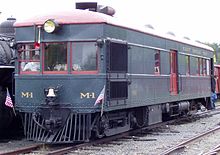3 ft gauge railroads in the United States
| By transport mode | ||||||||||||||||||||||||||||||||||||||||||||||||||||||||||||||||||||||||||||||||||||||||||||||||||||||||||||||||
|---|---|---|---|---|---|---|---|---|---|---|---|---|---|---|---|---|---|---|---|---|---|---|---|---|---|---|---|---|---|---|---|---|---|---|---|---|---|---|---|---|---|---|---|---|---|---|---|---|---|---|---|---|---|---|---|---|---|---|---|---|---|---|---|---|---|---|---|---|---|---|---|---|---|---|---|---|---|---|---|---|---|---|---|---|---|---|---|---|---|---|---|---|---|---|---|---|---|---|---|---|---|---|---|---|---|---|---|---|---|---|---|---|
| By size (list) | ||||||||||||||||||||||||||||||||||||||||||||||||||||||||||||||||||||||||||||||||||||||||||||||||||||||||||||||||
| ||||||||||||||||||||||||||||||||||||||||||||||||||||||||||||||||||||||||||||||||||||||||||||||||||||||||||||||||
| Change of gauge | ||||||||||||||||||||||||||||||||||||||||||||||||||||||||||||||||||||||||||||||||||||||||||||||||||||||||||||||||
| By location | ||||||||||||||||||||||||||||||||||||||||||||||||||||||||||||||||||||||||||||||||||||||||||||||||||||||||||||||||

| ||||||||||||||||||||||||||||||||||||||||||||||||||||||||||||||||||||||||||||||||||||||||||||||||||||||||||||||||














This is a list of 3 ft (914 mm) narrow-gauge railways in the United States.
Narrow-gauge railroads of various sizes existed across the US, especially during the late 1800s, with the most popular gauge being 3 ft gauge.[1][2] Some of the more famous 3 ft gauge railroad networks in the US were based in California, Colorado, and Hawaii. These narrow-gauge lines were easier to build than standard gauge and cost significantly less to construct. Some of the lines of these former networks still exist in the present day and continue to use 3 ft gauge track, while the rest were either widened to standard gauge or abandoned (see table below).
Railroads[edit]
See also[edit]
- Narrow-gauge railroads in the United States
- Heritage railway
- 2 ft gauge railroads in the United States
- 2 ft 6 in gauge railroads in the United States
- 3 ft gauge railways in the United Kingdom
- Three foot six inch gauge railways in the United States
- Three foot gauge locomotives on the U.S. National Register of Historic Places
- Rio Grande 168 (operational)
- Rio Grande 169 (static display)
- Rio Grande 223 (stored)
- Rio Grande 278 (static display)
- Rio Grande 315 (operational)
- Rio Grande 463 (operational)
- ET&WNC No. 12 (operational)
- Eureka Locomotive (operational)
- Glenbrook Locomotive (operational)
References[edit]
- ^ Broggie 2014, p. 111.
- ^ The Standardization of Track Gauge on North American Railways, 1830-1890 Archived 2014-04-07 at the Wayback Machine
- ^ Laws Railroad Museum and Historic Site - official website
- ^ Kauai Plantation Railway - official website Archived May 12, 2010, at the Wayback Machine
- ^ Republic of West Florida Historical Museum - official website
- ^ Point O' Woods Railroad - official website
- ^ a b Annual Report of the Commissioner of Railroads & Telegraphs of Ohio, for the year ending June 30, 1880, p. 1,244
- ^ "Doe River Gorge - official website". Archived from the original on 2014-02-04. Retrieved 2014-02-02.
Bibliography[edit]
- Broggie, Michael (2014), Walt Disney's Railroad Story: The Small-Scale Fascination That Led to a Full-Scale Kingdom (4th ed.), The Donning Company Publishers, ISBN 978-1-57864-914-3

